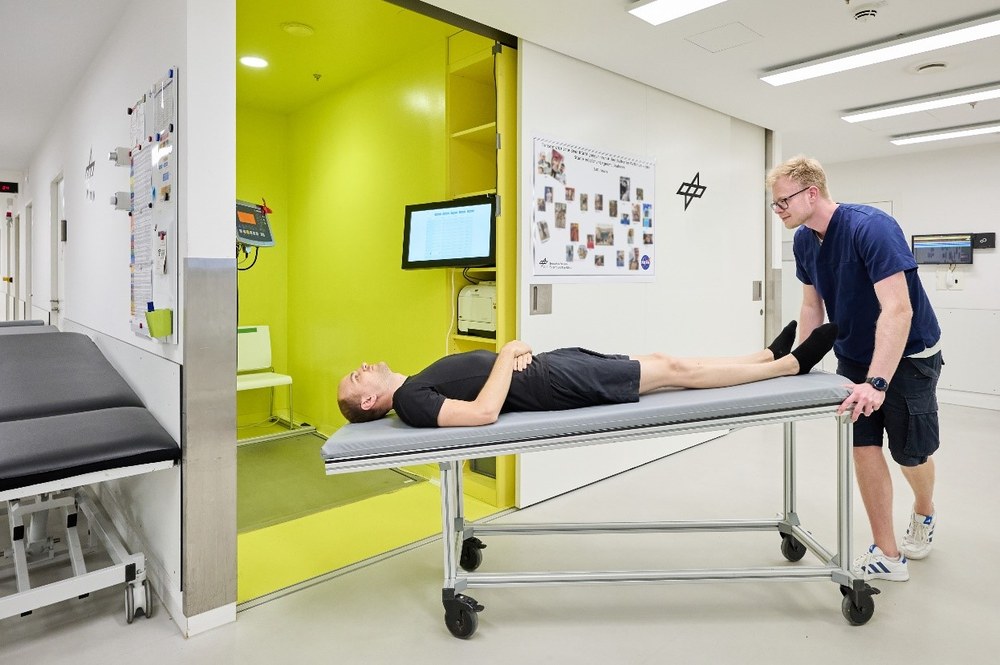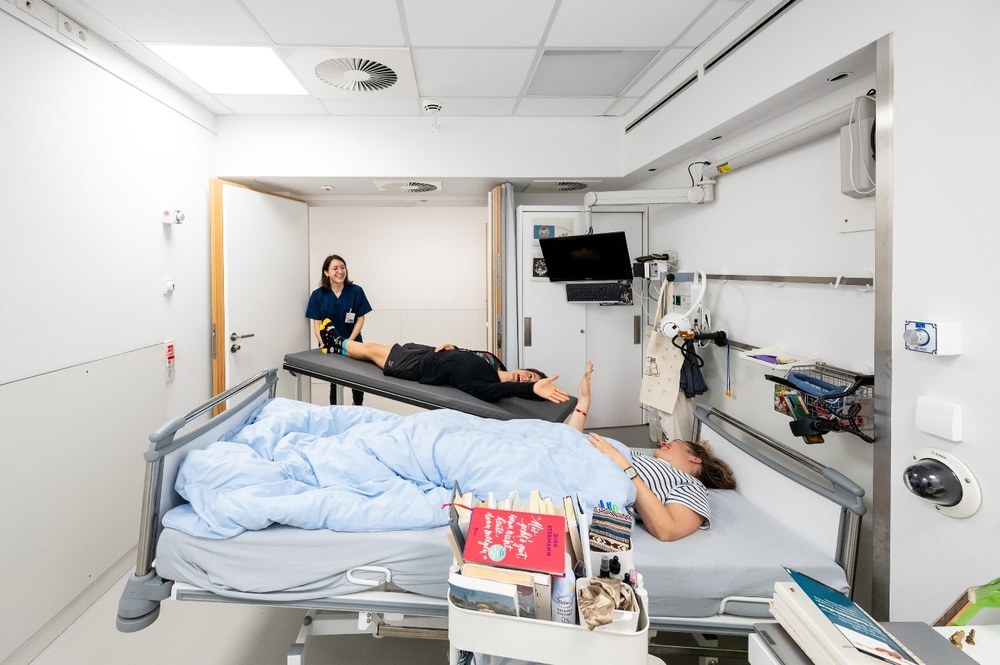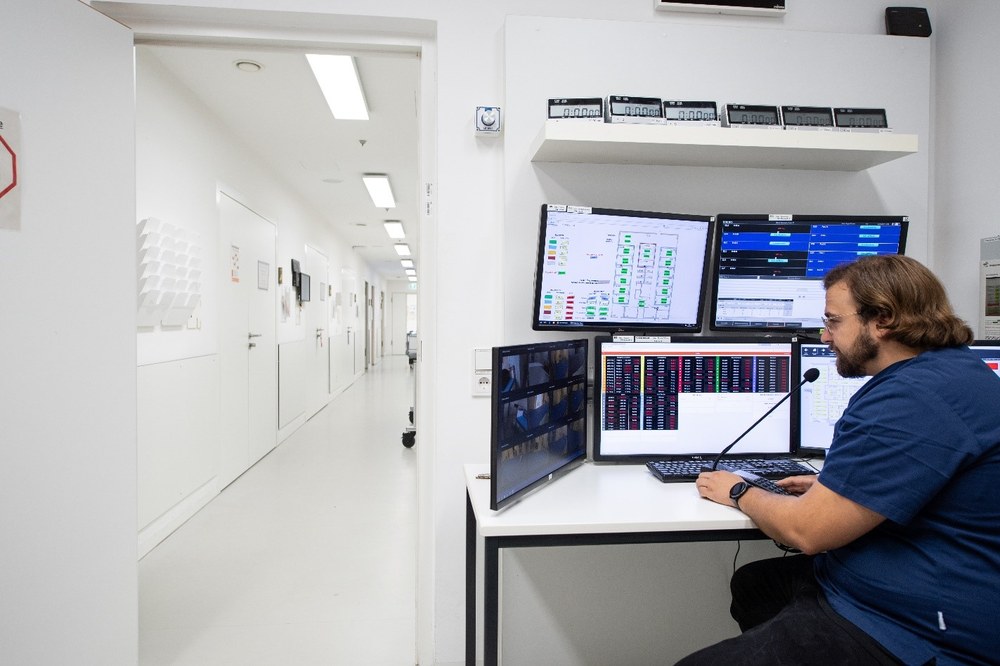DLR-NASA bed-rest study – round-the-clock care

In this blog series on the second campaign of NASA's sensorimotor countermeasures (SMC) bed-rest study, researchers from the DLR Institute of Aerospace Medicine present the key experiments and people behind them, showing how they develop measures to prepare humans for safe space exploration – while also advancing medical care here on Earth.
How do our bed rest participants spend their days in bed while also going about their daily routines? How do they take care of personal hygiene, interact with others, pursue hobbies or move around the :envihab facility when they have to lie down for the entire 60-day bed rest phase? Staff in the participant care team are crucial facilitators, available around the clock for a wide variety of tasks on the ward and in constant contact with the 12 test subjects.

Support during a bed rest study is mainly provided by student assistants from various degree programmes. A team of over 20 assistants looks after the participants, taking care of anything that comes up on the ward. They work in a system of early, late and night shifts, and during the 60-day bed rest phase at least two assistants are on site during each shift, supervised by a study coordinator.
Wake up at 06:30 – every day
The early shift starts at 06:15. Shortly before that, there's a shared coffee in the staff kitchen and a look through the logbook to get up to speed on the latest events and procedures on the ward. Participants are woken up at 06:30 every day – there are no weekend lie-ins during the study, which lasts, in total, 89 days. Not everyone is thrilled about the wake-up time, but they appreciate a few friendly words and a smile to greet them early in the day. The morning routine includes measuring blood pressure and body temperature, distributing urine bottles and coordinating the daily weigh-in (while lying at a 6 degree head-down tilt, of course!). During the bed rest phase, an assistant is on duty at all times as a 'monitor', using a camera to check that everyone is lying correctly.

Various experiments and activities for the day then follow. The assistants accompany the test subjects to experiments, do their laundry, wash hygiene items or draw up the shower schedule – as shower times have to be precisely coordinated with the daily schedule and the personal needs of the participants.
A Mario Kart tournament as a bedtime treat
At 14:15, the late shift takes over. There's a brief discussion about the special events of the day and urine bottles are handed over. They are meticulously checked for correct data entry, counted and taken to the laboratory for further analysis. Since the popular shower times are in the evening, participants are then transported to the shower (lying down, of course!) and back to their rooms. After dinner, participants like to gather in the lounge in their beds, where assistants organise film or games evenings – if there's time, they're welcome to also join in. A particular favourite with the team and participants? The Mario Kart game console tournament!

The night shift begins at 21:15 and helps participants with the evening routine: distributing wash bowls and urine bottles, collecting water bottles and checking the bed angle. As soon as the lights go out at 22:30, the team enters the test results into the database, prepares documents for the next day, disinfects all surfaces and cleans the hygiene materials.
The team's support ensures participants have everything they need. Participants can reach the assistants at any time by calling the study office, and the team fulfils requests whenever it's possible to do so. Urine bottles and bedpans are most frequently needed, but sometimes it's just a matter of handing over the coloured pencils from the desk, beyond reach from the bed.
Work in participant care is varied and, due to the close contact, very personal. As the participants are heavily dependent on the team during the bed rest phase, a familiar relationship quickly develops, and intimate conversations arise. Friendships have even formed that live on beyond the bed rest study.
Related links
- Blog post – DLR-NASA bed-rest study – Functional Performance Test
- Blog post – NASA bed-rest study enters second round – training methods tested for coordination, balance and motor control in space
- Blog post – Not for the lazy: exercising lying down
- Blog post – Lying down and learning: on strings, lying on one's side and self-discovery
- Blog post – Milestone reached in the bed-rest study
- Blog post – After three weeks of bed rest: thumbs up for the nutrition team!
- Blog post – Lying down and learning: on strings, lying on one's side and self-discovery
- Blog post – 400 kilometres apart and yet connected: My analogue mission with the crew on the ISS
- The aerospace medicine research facility :envihab
- DLR Institute of Aerospace Medicine
Tags:
